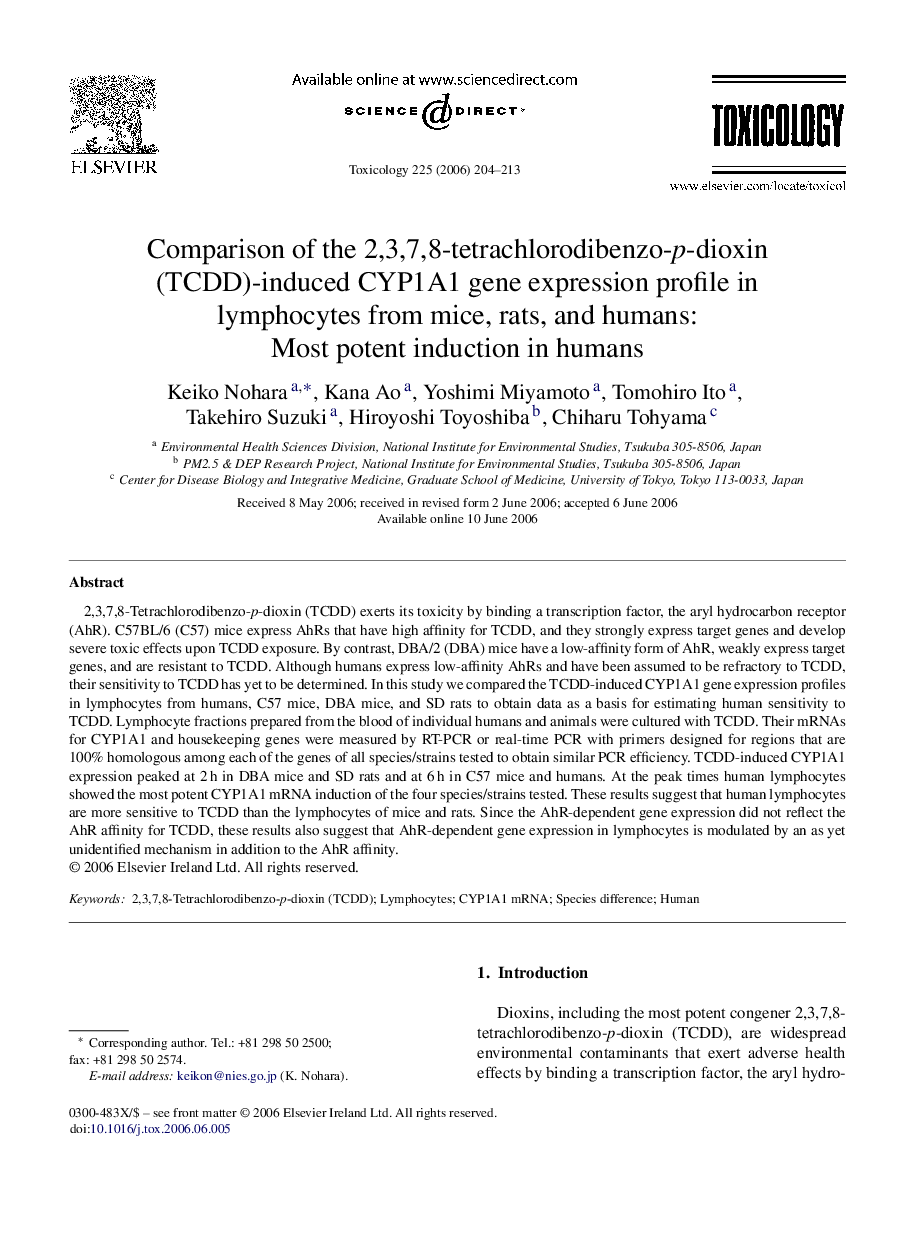| کد مقاله | کد نشریه | سال انتشار | مقاله انگلیسی | نسخه تمام متن |
|---|---|---|---|---|
| 2597818 | 1562431 | 2006 | 10 صفحه PDF | دانلود رایگان |

2,3,7,8-Tetrachlorodibenzo-p-dioxin (TCDD) exerts its toxicity by binding a transcription factor, the aryl hydrocarbon receptor (AhR). C57BL/6 (C57) mice express AhRs that have high affinity for TCDD, and they strongly express target genes and develop severe toxic effects upon TCDD exposure. By contrast, DBA/2 (DBA) mice have a low-affinity form of AhR, weakly express target genes, and are resistant to TCDD. Although humans express low-affinity AhRs and have been assumed to be refractory to TCDD, their sensitivity to TCDD has yet to be determined. In this study we compared the TCDD-induced CYP1A1 gene expression profiles in lymphocytes from humans, C57 mice, DBA mice, and SD rats to obtain data as a basis for estimating human sensitivity to TCDD. Lymphocyte fractions prepared from the blood of individual humans and animals were cultured with TCDD. Their mRNAs for CYP1A1 and housekeeping genes were measured by RT-PCR or real-time PCR with primers designed for regions that are 100% homologous among each of the genes of all species/strains tested to obtain similar PCR efficiency. TCDD-induced CYP1A1 expression peaked at 2 h in DBA mice and SD rats and at 6 h in C57 mice and humans. At the peak times human lymphocytes showed the most potent CYP1A1 mRNA induction of the four species/strains tested. These results suggest that human lymphocytes are more sensitive to TCDD than the lymphocytes of mice and rats. Since the AhR-dependent gene expression did not reflect the AhR affinity for TCDD, these results also suggest that AhR-dependent gene expression in lymphocytes is modulated by an as yet unidentified mechanism in addition to the AhR affinity.
Journal: Toxicology - Volume 225, Issues 2–3, 15 August 2006, Pages 204–213